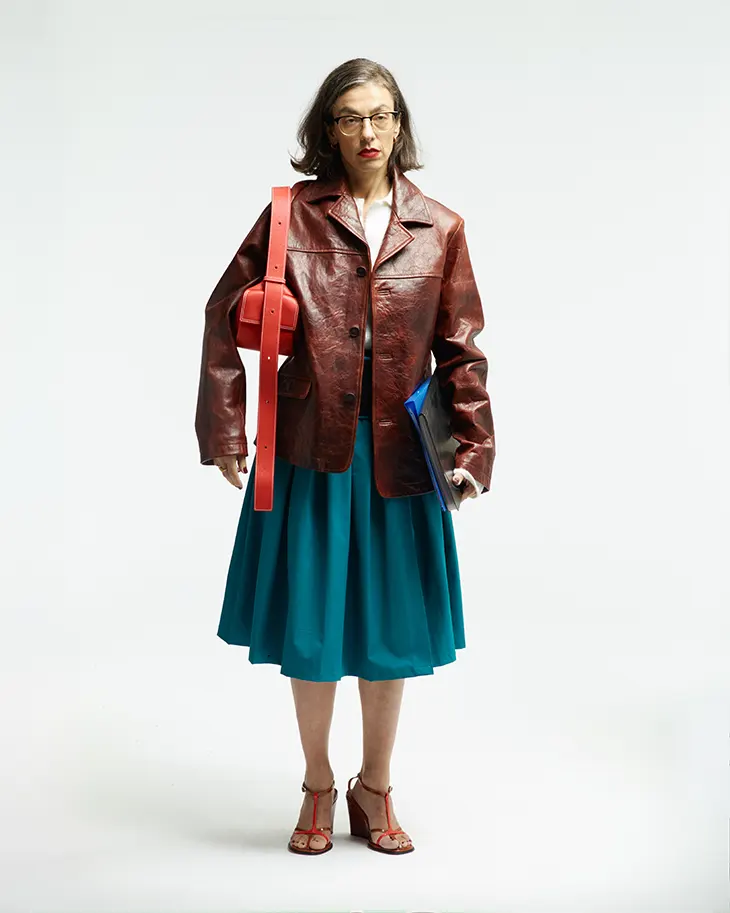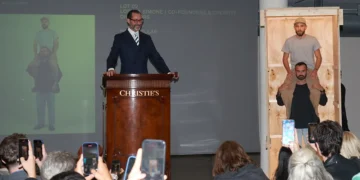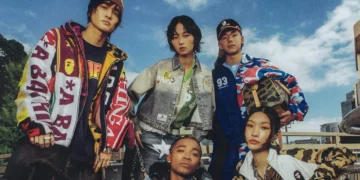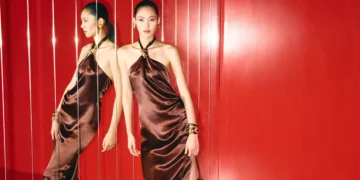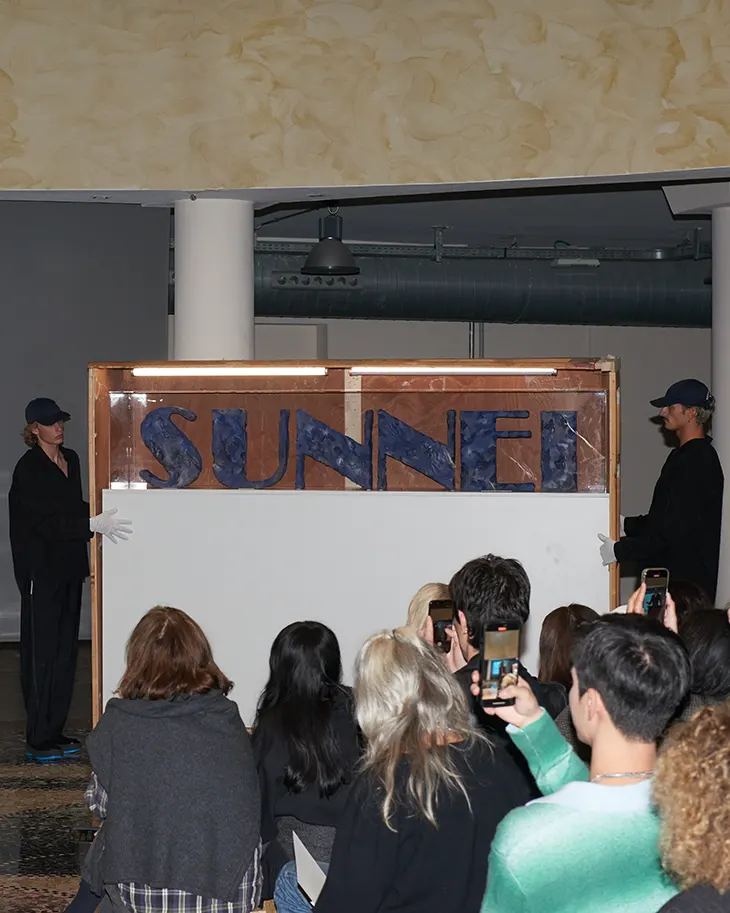
SUNNEI has never been content with the runway. Since its founding in 2015 by Loris Messina and Simone Rizzo, the Milan-based label has redefined what a fashion show can be: playgrounds instead of catwalks, street-cast models instead of archetypes, performances instead of parades. For Spring Summer 2026, the duo delivered their most daring gesture yet, a staged auction in partnership with Christie’s, where the brand, its identity, and finally its founders themselves became lots up for sale.
SPRING SUMMER 2026
Guests entered into a theatre of commerce. Each received a silver scratch card, revealing how many “fashion dollars” they could spend in this imaginary economy. A massive wooden crate rolled in, cracked open to reveal a monumental SUNNEI logo, the first lot. Guests bid, the hammer fell, and the brand itself was symbolically sold. Another crate followed, containing Messina and Rizzo. As Cristiano De Lorenzo, Managing Director of Christie’s Italy, called the auction, the crowd played along until the gavel declared them gone.
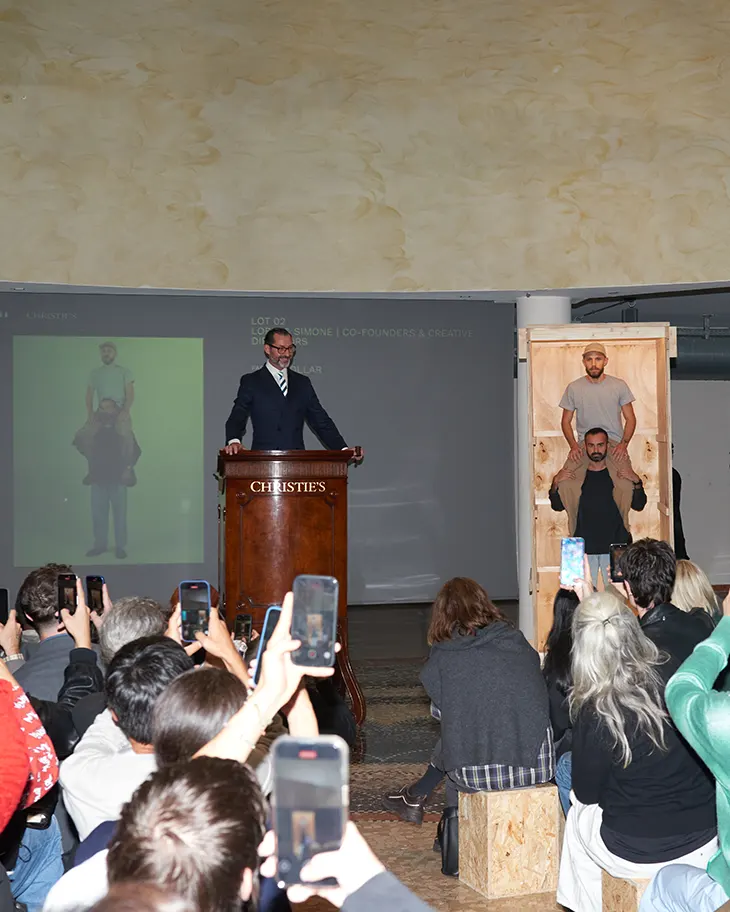
Around them, members of the SUNNEI community worked as intermediaries, dressed in SS26, channeling both the collection and the spirit of participation that has always defined the brand. The clothes, playful, architectural, infused with SUNNEI’s trademark sense of irreverence, were not the focus but the scaffolding of the performance. Here, fashion became a stage for fiction and finance, creativity and commerce collapsing into a single, surreal act.
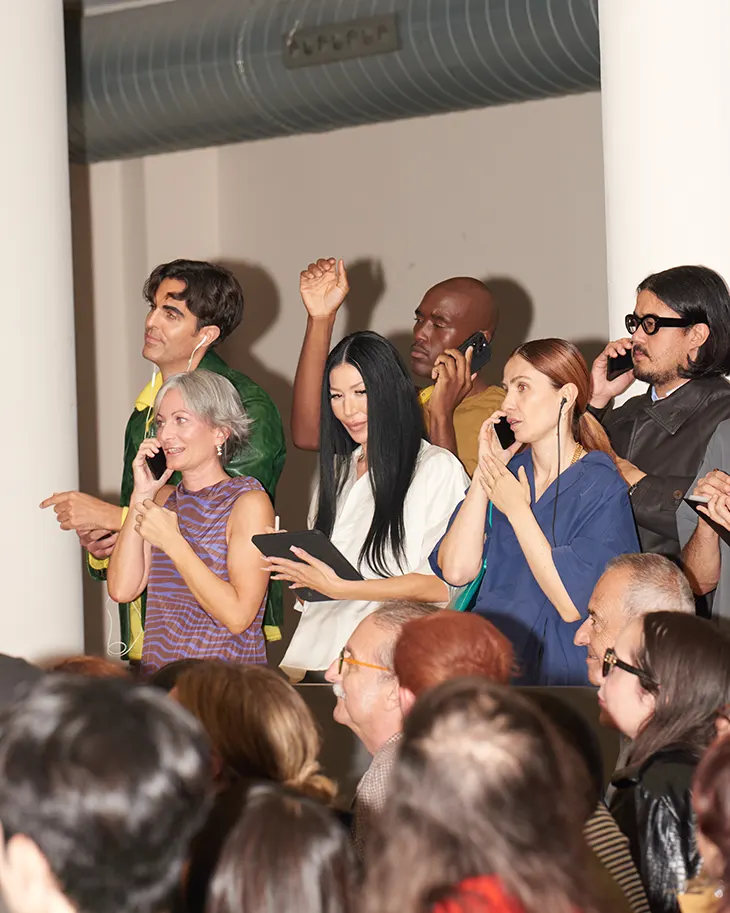
The performance took on a sharper edge hours later when Messina and Rizzo announced they were stepping down from SUNNEI. What seemed like satire suddenly became prophecy. The auction was a metaphor for fashion’s commodification and a farewell note disguised as theatre. In one stroke, the founders underscored the contradictions of the system they helped to bend, exposing the fragility of authorship in an industry where brands often outlive their creators.
View this post on Instagram
Over the past decade, SUNNEI carved out a space of resistance within Milan’s fashion map. It spoke in the language of youth, technology, and irony, while refusing to conform to the industry’s expected narratives. It built a loyal community around experiments like Canvas, which allowed customers to customize and “co-own” designs, and through performances that transformed shows into shared experiences. Messina and Rizzo built a laboratory where fashion could laugh at itself while still moving forward.
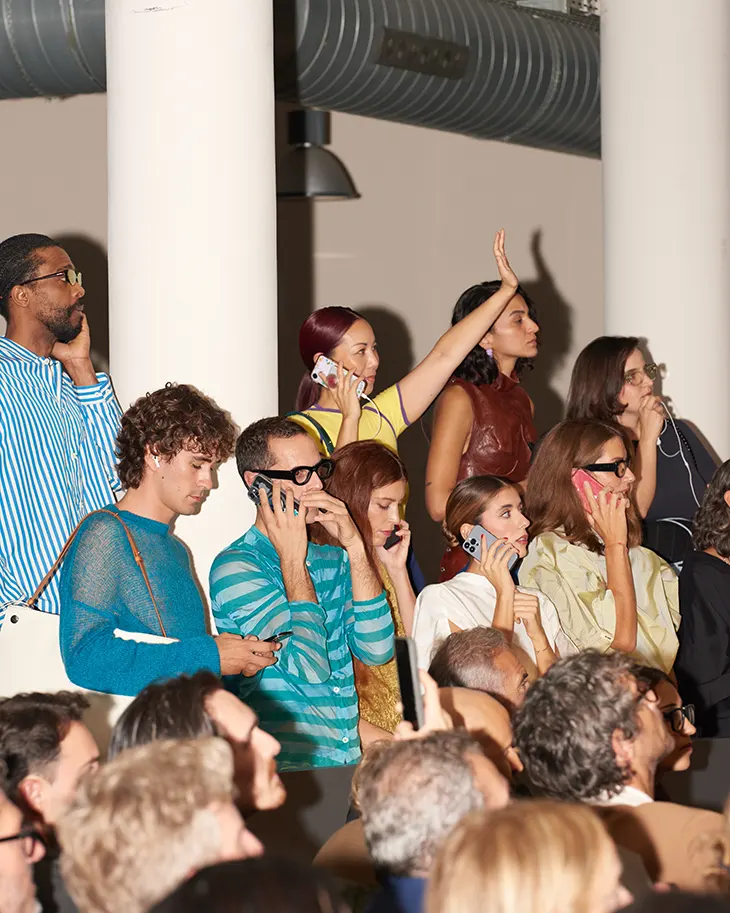
What comes next remains unwritten. Without its founders, SUNNEI stands at a precipice, sold in fiction, now shifting in reality. Will it continue under new creative leadership, or will the auction be remembered as the closing curtain call? For now, the SS26 show lingers as both performance and epilogue: a surreal hall of mirrors where brand, authorship, and desire were put under the hammer, and where the final lot was the departure of two designers who dared to reinvent the Milanese stage.
